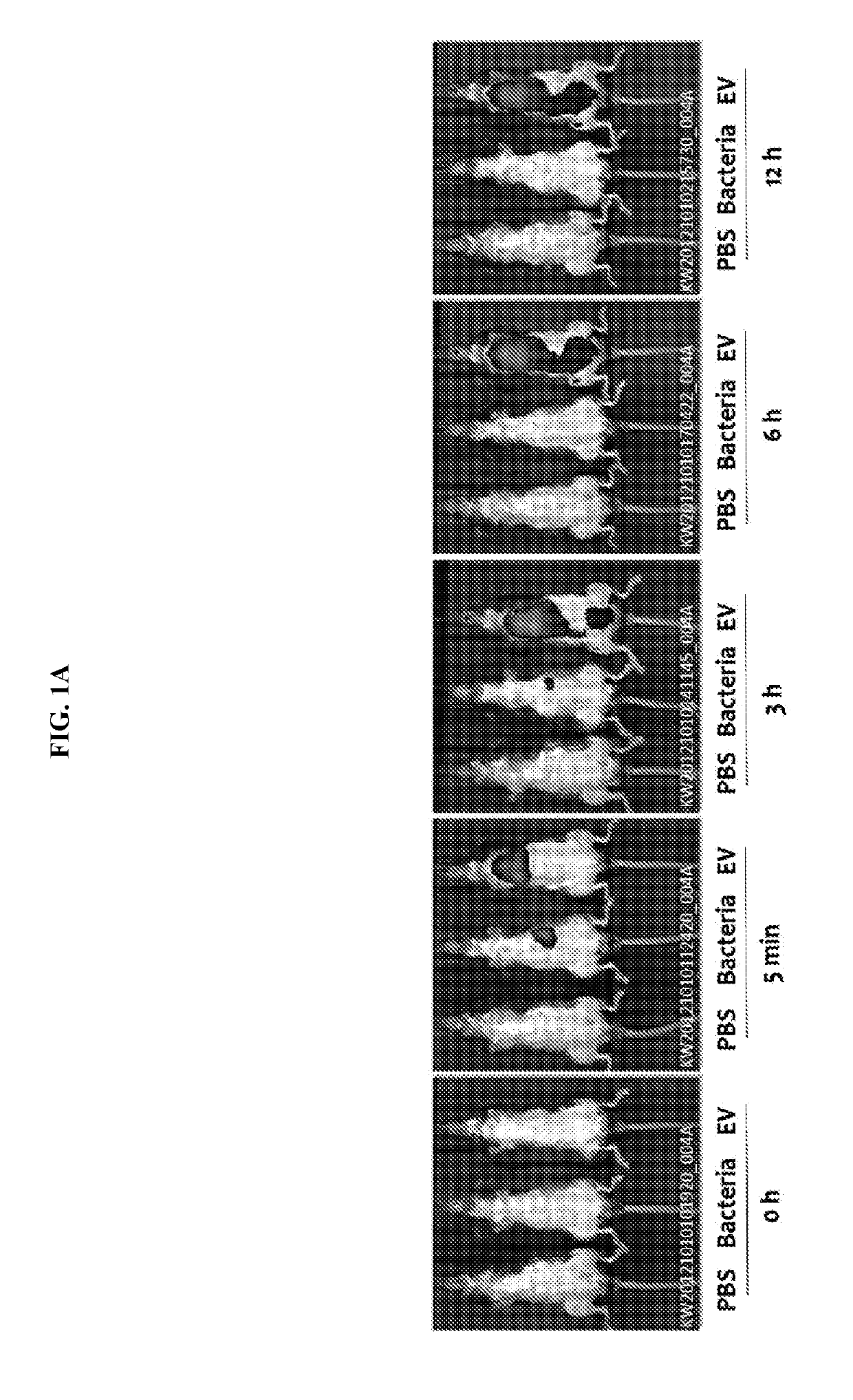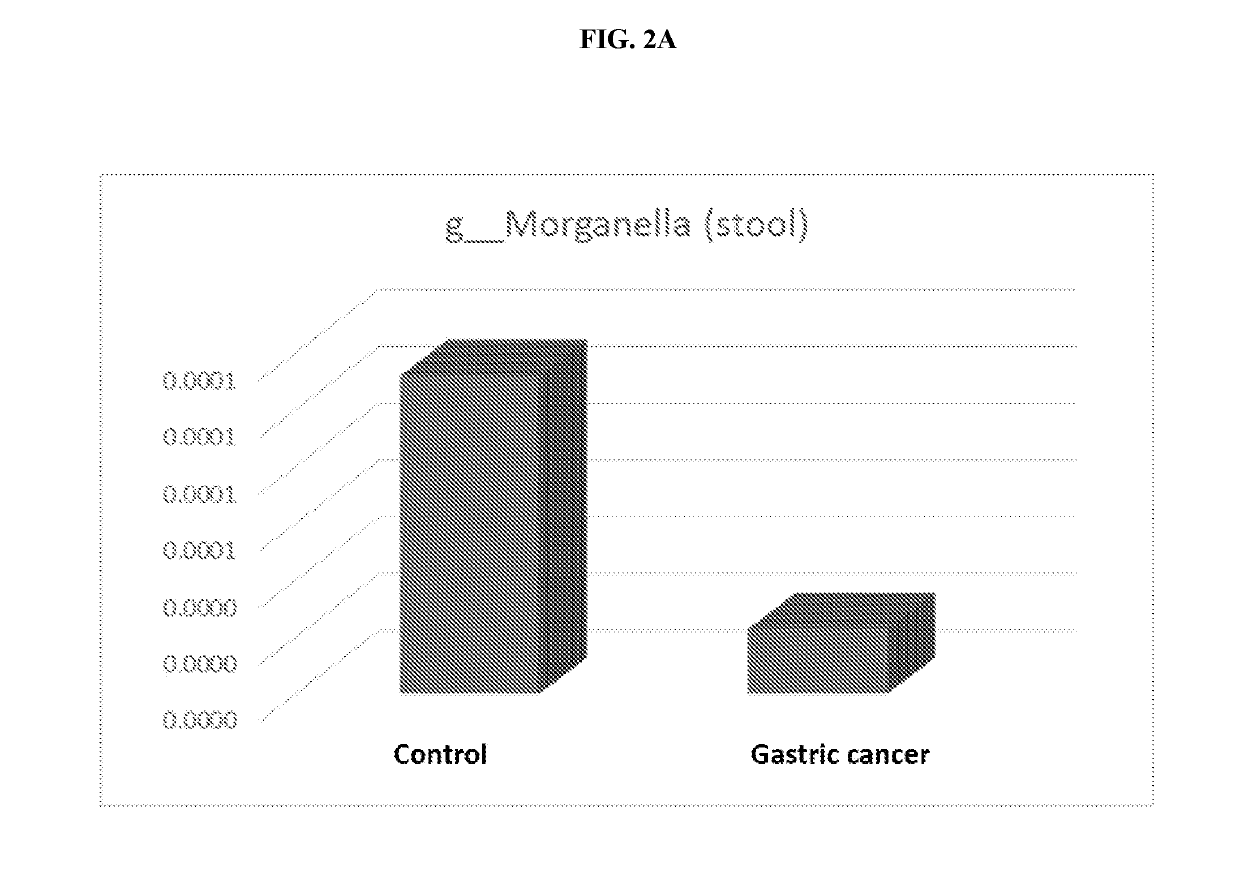Nano-vesicles derived from genus morganella bacteria and use thereof
a technology of morganella bacteria and nano-vesicles, which is applied in the field of nano-vesicles derived from genus morganella bacteria, can solve the problems of neuropsychiatric diseases, the application of nano-vesicles,
- Summary
- Abstract
- Description
- Claims
- Application Information
AI Technical Summary
Benefits of technology
Problems solved by technology
Method used
Image
Examples
example 1
of In Vivo Absorption, Distribution, and Excretion Patterns of Intestinal Bacteria and Vesicles Derived from Bacteria
[0094]In order to evaluate whether intestinal bacteria and vesicles derived from bacteria were systemically absorbed through the gastrointestinal tract, an experiment was performed with the following method. A dose of 50 μg of each of intestinal bacteria and vesicles derived from intestinal bacteria labeled with fluorescence in the stomach of a mouse were administered to the gastrointestinal tract, and fluorescence was measured after 0 minute, 5 minutes, 3 hours, 6 hours, and 12 hours. As a result of observing the entire image of the mouse, as illustrated in FIG. 1A, the bacteria were not systemically absorbed through the intestinal mucosa, but the vesicles derived from bacteria were systemically absorbed 5 minutes after administration, and fluorescence was strongly observed in the bladder 30 minutes after administration, so that it could be seen that the vesicles wer...
example 2
ic Analysis of Vesicles Derived from Bacteria in Clinical Sample
[0096]A clinical sample such as blood, urine, or stool was first put into a 10-ml tube, suspended matter was allowed to settle down by centrifugation (3,500×g, 10 min, 4° C.), and only the supernatant was transferred to a new 10-ml tube. After bacteria and impurities were removed by using a 0.22-μm filter, they were transferred to a Centriprep tube (centrifugal filters 50 kD) and centrifuged at 1,500×g and 4° C. for 15 minutes, materials smaller than 50 kD were discarded, and the residue was concentrated to 10 ml. After bacteria and impurities were removed once again by using a 0.22-μm filter, the supernatant was discarded by using a ultra-high speed centrifugation at 150,000×g and 4° C. for 3 hours with a Type 90Ti rotor, and an aggregated pellet was dissolved in physiological saline (PBS).
[0097]Internal DNA was extracted out of the lipid by boiling 100 μl of the vesicles isolated by the above method at 100° C., and th...
example 3
ic Analysis of Vesicles Derived from Stool, Blood, and Urine Bacteria of Patient with Gastric Cancer
[0099]After a metagenomic analysis was performed on the stool from 63 patients with gastric cancer and 126 normal persons who were matched in age and sex by extracting genes from vesicles present in the stool by the method in Example 2, the distribution of vesicles derived from genus Morganella bacteria was evaluated. As a result, it was confirmed that vesicles derived from genus Morganella bacteria were significantly decreased in the stool from the patients with gastric cancer as compared to the stool from the normal persons (see Table 2 and FIG. 2A).
TABLE 2StoolControlGastric cancert-testTaxonMeanSDMeanSDp-valueRatiog_Morganella0.00010.00070.00000.00020.04720.20
[0100]After a metagenomic analysis was performed on the blood from 66 patients with gastric cancer and 198 normal persons who were matched in age and sex by extracting genes from vesicles present in the blood by the method in...
PUM
| Property | Measurement | Unit |
|---|---|---|
| diameter | aaaaa | aaaaa |
| size | aaaaa | aaaaa |
| size | aaaaa | aaaaa |
Abstract
Description
Claims
Application Information
 Login to View More
Login to View More - R&D
- Intellectual Property
- Life Sciences
- Materials
- Tech Scout
- Unparalleled Data Quality
- Higher Quality Content
- 60% Fewer Hallucinations
Browse by: Latest US Patents, China's latest patents, Technical Efficacy Thesaurus, Application Domain, Technology Topic, Popular Technical Reports.
© 2025 PatSnap. All rights reserved.Legal|Privacy policy|Modern Slavery Act Transparency Statement|Sitemap|About US| Contact US: help@patsnap.com



